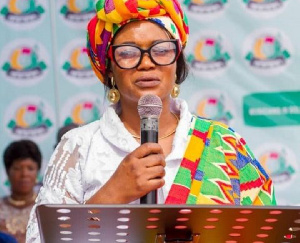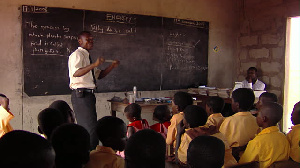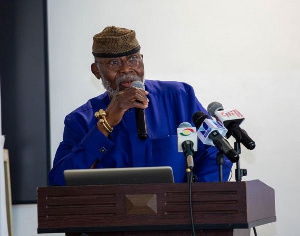Opinions of Wednesday, 6 July 2022
Columnist: Osumanu Abubakar
How equity is promoted in mathematics classroom and its impact on teaching practices and student learning
Creating, supporting, and sustaining equity in mathematics classrooms requires being responsive to students' backgrounds, experiences, cultural perspectives, traditions, and knowledge when designing and implementing a mathematics program and assessing its effectiveness.
Practices that support equity require comprehensive understanding. These practices include, but are not limited to, holding high expectations, ensuring access to high-quality mathematics curriculum and instruction, allowing adequate time for students to learn, placing appropriate emphasis on differentiated processes that broaden students' productive engagement with mathematics, and making strategic use of human and material resources.
Addressing equity includes both ensuring that all students attain mathematics proficiency and increasing the numbers of students from all racial, ethnic, linguistic, gender, and socio-economic groups to attain the highest levels of mathematics achievement.
Aims and Objective
The aim of the study is to monitor the impact of different teaching approaches on students' understanding of mathematics and their relationships with the discipline.
Methodology
In this study, I will analyse two different classrooms at the high school level. The study will involve two different public schools, one from the Metropolitan city. Throughout the course of this paper, I will refer to this school as ‘School A’. The other school will be from a rural area. Similarly, I will refer to this school as ‘School B’ throughout the rest of this paper.
Literature Review
The idea of equity in mathematics education is expressed by the National Council of Teachers of Mathematics as having high expectations and worthwhile opportunities for all, accommodating differences to help everyone learn mathematics, and resources and support for all classrooms and students (NCTM, 2000).
The NCTM defines equity in a way that aligns with many of the themes we have chosen to study in relation to creating equitable learning environments. In the paper entitled Making mathematics meaningful in a multicultural context, Gloria Ladson-Billings voices, “The notion of an equity pedagogy refers to the opportunities that all children have to benefit from classroom instruction” (Ladson-Billings, 1995). Additionally, Ladson-Billings expresses that sorting and grouping students into lower levels where they receive minimal instruction from the teacher, while the students in the higher levels are presented with a more challenging and intellectually stimulating curriculum is an example of where some of these inequities occur. For example, Ladson-Billings discusses the experience of an educator, Mrs. Rossi, and how she handles her classroom instruction.
Ladson-Billings expresses that she observed Ms. Rossi constantly telling students they were capable of mastering different mathematics problems. The paper entitled Learning from Teaching: Exploring the Relationship Between Reform Curriculum and Equity by Jo Boaler discusses the importance and previous research that has been conducted regarding the benefits of an open-ended teaching approach. In this paper, Boaler discusses the QUASAR project (Brown, Stein, & Forman, 1996; Lane & Silver, 1999; Silver, Smith, & Nelson, 1995) which focused on the fact that mathematical proficiency could be attained by all students if educators placed a greater emphasis on problem-solving, communication, and conceptual understanding.
The project involved six educators in urban middle schools who had students who were socially and culturally diverse. These educators spent five years working to develop and implement a more open and discursive mathematics curriculum (Boaler, 2002). The conclusion that the above-mentioned researchers took away from this was that the QUASAR students’ achievement had a positive outcome, meaning the students performed at significantly higher levels than comparable groups of students on a range of different assessments (Boaler, 2002).
Research Questions
(i) What is required to create, support, and sustain a culture of equity in the teaching and learning of mathematics in the classroom?
(ii) How and to what extent do educators implement the above-mentioned themes in their classrooms?
Significance of the Study
Achieving equity in the mathematics classroom requires that all stakeholders ensure that all students have access to a challenging mathematics curriculum, taught by skilled and effective teachers who differentiate instruction as needed, monitor student progress and make needed recommendations, and offer remediation or additional challenges when appropriate.
References:
Boaler, J. (2002). Learning from Teaching: Exploring the Relationship between ‘Reform’ Curriculum and Equity. Journal for Research in Mathematics Education. Retrieved from URL
https://bhi61nm2cr3mkdgk1dtaov18wpengine.netdnassl.com/wpcontent/uploads/learningfromteachingjrme.pdf
Huinker, D. Bill, V. (2017). Taking action: Implementing effective mathematics teaching practices. National Council of Teachers of Mathematics. Reston, VA.
National Council of Teachers of Mathematics. (2014). Access and Equity in Mathematics Education. NCTM. Retrieved from URL www.nctm.org/Standards-andPositions/Position-Statements/Access-and-Equity-in-Mathematics-Education/
National Council of Teachers of Mathematics. (2014). NCTM Principles to Actions Beliefs About Equity. NCTM. Retrieved from URL
http://www.mctm.org/mespa/15EquityBeliefsRatingScale
Walter, H. A. (2018). Beyond Turn and Talk: Creating Discourse. Teaching Children Mathematics, 25(3).
Secada, W., Fennema, E., Ladson-Billings, G. & Adajian, L. (1995). New Directions for Equity in Mathematics Education. Cambridge University Press.
Author
Otoo John (Mathematics Teacher)
Kade Senior High Technical School - Kade
Email: [email protected]
Entertainment










